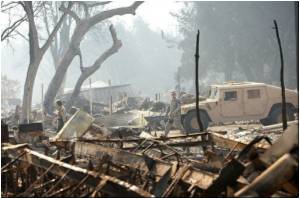Climate change is causing wildfires to burn more fiercely, pumping more greenhouse gases into the atmosphere than previously thought, reveals a new study.

"These findings are worrisome because about half the world's soil carbon is locked in northern permafrost and peatland soils. This is carbon that has accumulated in ecosystems a little bit at a time for thousands of years, but is being released very rapidly through increased burning," said lead author Merritt Turetsky of the University of Guelph.
"Essentially this could represent a runaway climate change scenario in which warming is leading to larger and more intense fires, releasing more greenhouse gases and resulting in more warming. This cycle can be broken for a number of reasons, but likely not without dramatic changes to the boreal forest as we currently know it," said Turetsky.
This study is part of a growing body of evidence that northern systems are bearing the brunt of climate change, said co-author Jennifer Harden, a U.S. Geological Survey scientist.
"This includes longer snow-free seasons, changes in vegetation, loss of ice and permafrost, and now fire, which is shifting these systems from a global carbon sink toward a carbon source," said Harden.
The researchers visited almost 200 forest and peatland sites shortly after blazes were extinguished to measure how much biomass burnt. They also looked at fire records kept since the 1950s.
Advertisement
"This is the first study that has demonstrated that increases in burned area are clearly linked to increases in fire severity. This not only impacts carbon storage, but also will accelerate permafrost loss and changes in forest cover," said Kasischke.
Advertisement
Source-ANI











